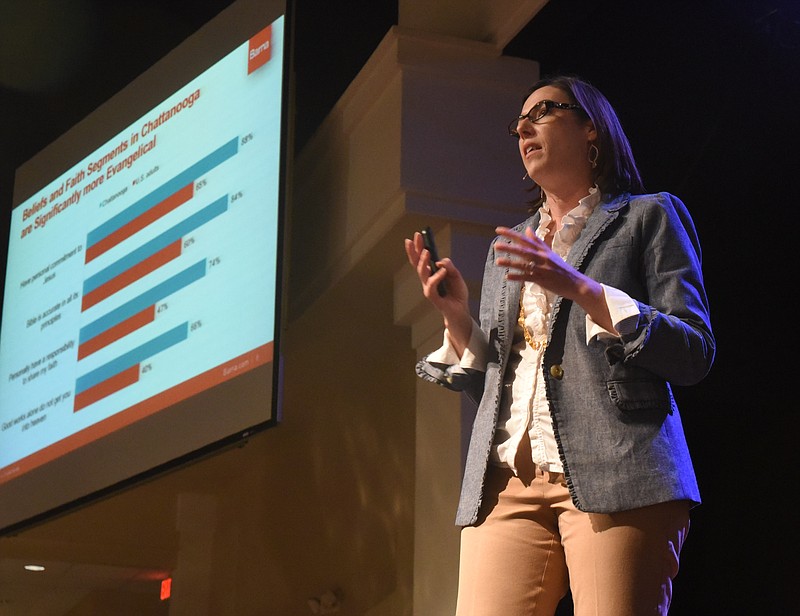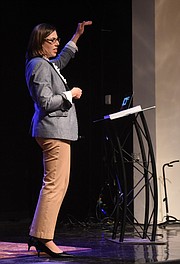More Info
To read the report “Generations & Generosity: How Age Affects Giving,” go to https://www.barna.com.
The church pastor wanted money to support missionaries overseas. He passed the offering plate among his congregation, and it came back nearly empty.
"Where are the young people?" he asked. "They're not contributing to our fund."
So he preached a series on generosity and passed the plate again - to similar results. Instead of filling the offering plate, the younger church members invited missionaries to their homes for dinner.
Brooke Hempell, senior vice president of research for Barna Group, shared the story to illustrate a generational gap in how elder church members and millennials perceive generosity.
It's the Elder generation, born in 1945 or earlier and often called the Greatest Generation, who define generosity through service and financial contribution.
Millennials, born 1982-2004, are more likely to express generosity through hospitality. It's also the elder generation that may have more money to give.
The information stems from a Barna Group report called "Generations & Generosity: How Age Affects Giving." The report states that there are significant gaps among generations when it comes to the perceived importance and practice of giving.
Hempell presented information from the report to a group of 25 pastors and church leaders at Brainerd Baptist Church this week. Many of them were concerned about church contributions.
The Barna Group reports that more than 90 percent of churchgoers are not giving 10 percent of their income.
"We're definitely seeing how older people have this habit of giving, or they make a pledge and they give monthly to a church or ministry. And younger people, if you post something on Facebook, like a hungry child, they're going to give to that, and they're done with that organization. They don't make a lasting commitment with a group or an organization," said Bevelle Puffer of Leadership Ministries Worldwide, the group that invited Hempell to Chattanooga.
While the elder generation gives routinely, the younger generation is more likely to give on impulse to address a particular need or situation, said Hempell.
There's opportunity for both groups to learn from each other. The Millennials can demonstrate the importance of hospitality while older generations may offer discipleship on routine financial giving, said Hempell.
Generation Xers, born 1965-1984, and Baby Boomers, born 1946-1964, are more diversified in their expressions of generosity. But the reality is that Boomers and Generation X will become the larger donors as they move into life stages when they have more funds available. So it's important to understand how they express generosity.
Gen Xers and Millennials have a greater need for transparency than Boomers and Elders, said Hempell. They want to know exactly where the money is going and see the detail, rather than just routinely handing over a check. They want regular information about what they're doing and the impact that it's having.
Hempell also noted that younger people may give less money because they have less to give. The income levels in Chattanooga are a lot lower than the national average.
"You have a significantly higher population falling into the lowest income bracket, which means it's truly hard for them to give," she said.
The Elders have been very conditioned to give and be sacrificial in the way they express generosity. It's a part of growing up in the Depression era. So it's in their makeup to express generosity in a way that's more planned. It's the opposite for the Millennial generation, who grew up with smartphones in their hands. They're used to constantly getting feedback and expressing themselves in the moment, she said.
Hempell also discussed a decline in men attending churches.
The information focused on people who had not been to church in the past six months. Either they have no affiliation with Christianity or for whatever reason they had not been to church, she said.
That population is usually ages 33 to 55. There may be more factors to influence people away from church like sports. And sometimes just the business of life may influence people away from church, she said.
About 60 percent of those who are not in church are married. Their income range mirrors their education level, and they are more predominately white. So the African-American and Hispanic churches tend to do a better job of engaging people for the long run, said Hempell.
Contact Yolanda Putman at yputman@timesfreepress.com or 423-757-6431.

